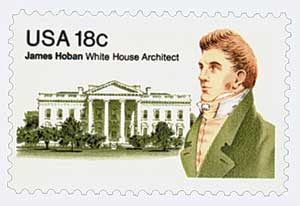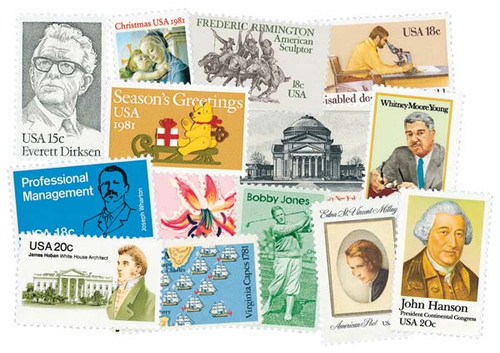
# 1936 - 1981 20c James Hoban
1981 20¢ James Hoban
City: Washington, DC
Quantity: 167,360,000
Death Of James Hoban
James Hoban’s exact birthdate is unknown, but it’s believed he was born around 1758 in Callan, County Kilkenny, Ireland. He grew up on the estate of the Earl of Desart.
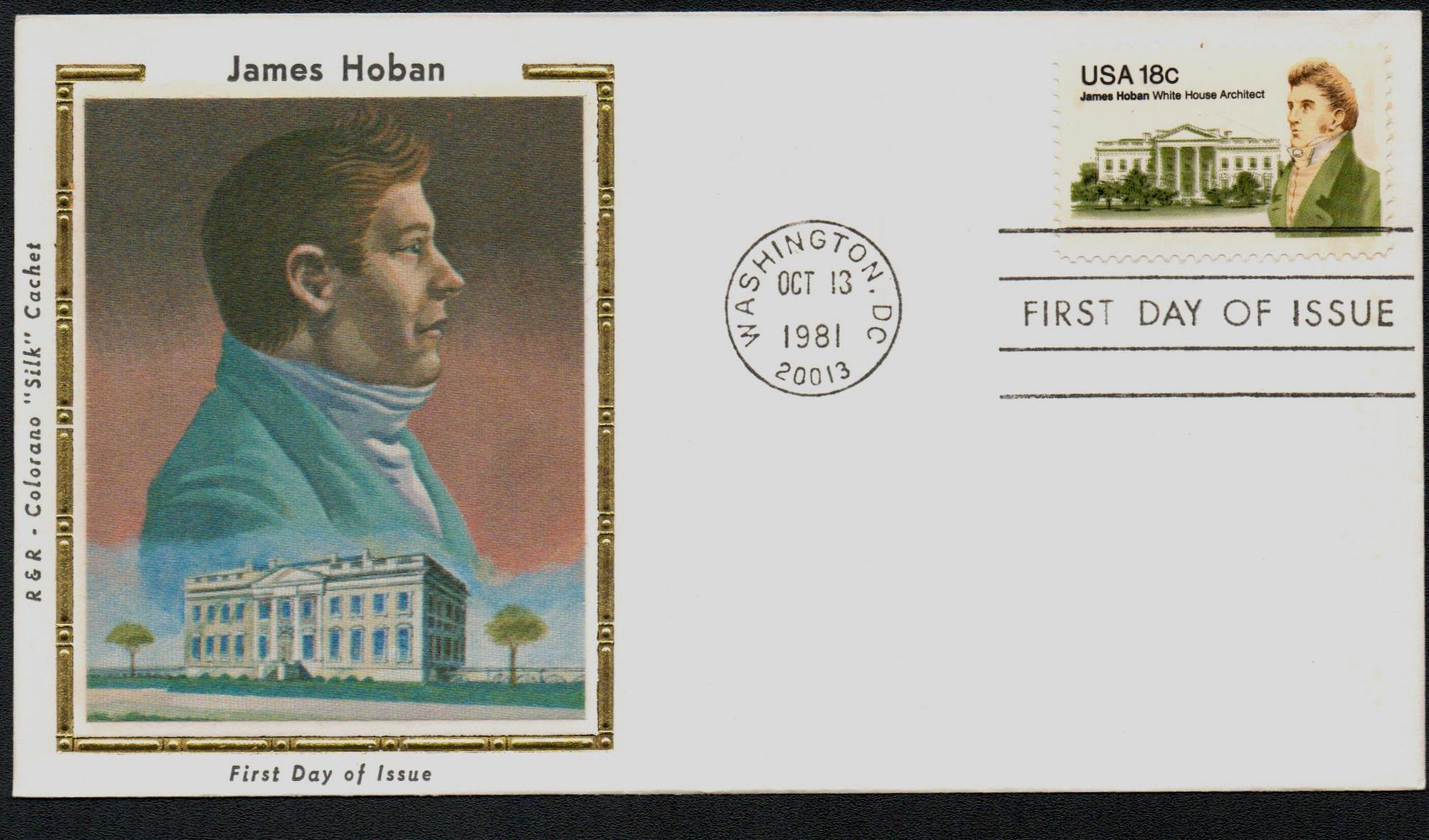
Hoban spent several years working as a wheelwright and carpenter before receiving placement as an “advanced student” at the Dublin Society’s Drawing School. While there he earned the Duke of Leinster’s medal for his drawings of brackets, stairs, and roofs. After that, he worked as an apprentice to Thomas Ivory.
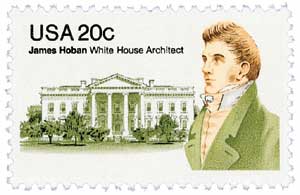
After the American Revolutionary War ended, Hoban immigrated to the US and found work as an architect in Philadelphia in 1785. Two years later he moved to South Carolina, where he designed a number of plantation homes and public buildings including the Charleston County Courthouse. In 1791, President George Washington passed through South Carolina on his Southern Tour and took note of Hoban’s work. The following year, he invited Hoban to visit Philadelphia, the temporary national capital, to take part in a design competition for the White House.
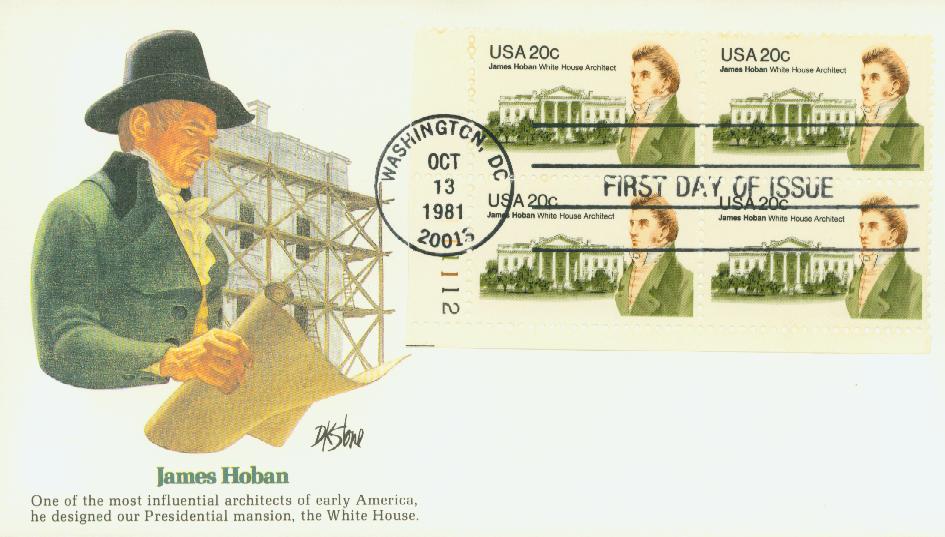
Hoban won the contest with a design that included a three-story façade. It appears Hoban then worked with President Washington to tweak his design to a two-story façade and 11 bays across instead of nine. Hoban’s design also incorporated features of several Irish and French country homes. Over the next eight years, Hoban oversaw the construction of the White House.
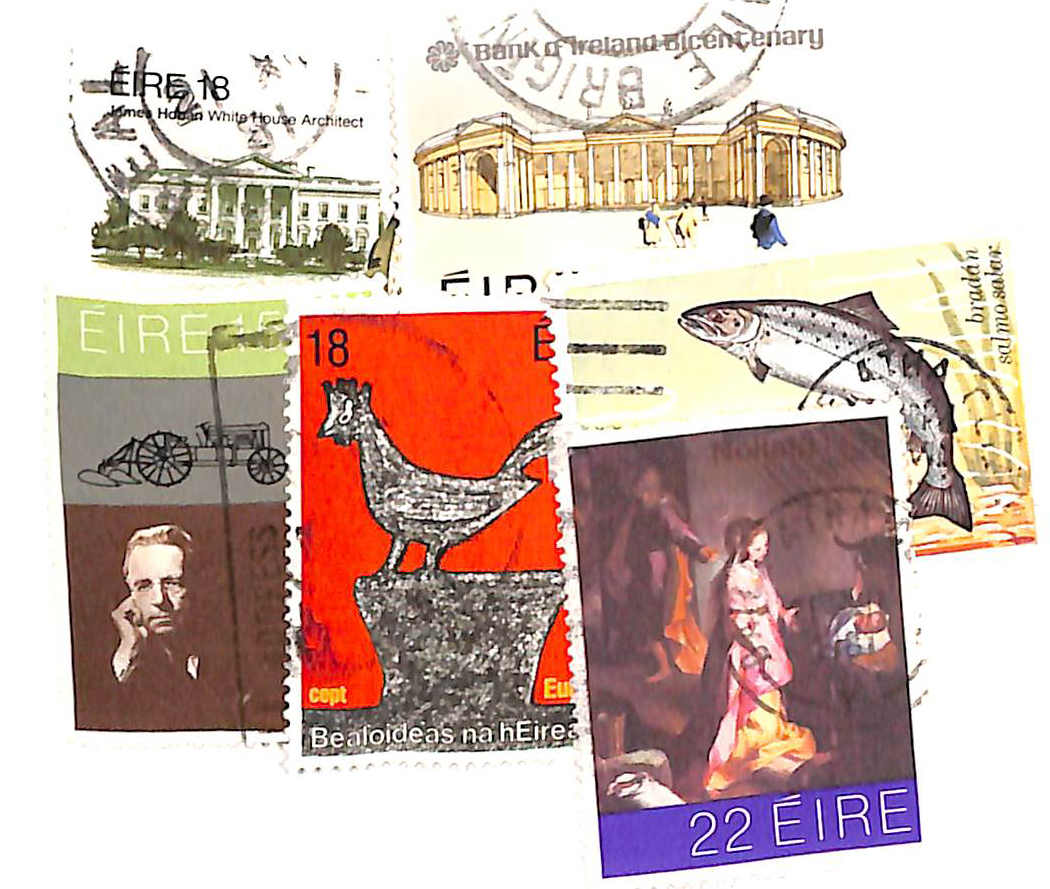
Hoban remained in Washington for the rest of his life. He was one of the supervising architects during the building of the Capitol and the Octagon House. He also worked on other public projects as the nation’s capital developed. After the British burned the White House during the War of 1812, he personally supervised the rebuilding process.
During his time in the capital, Hoban served on the city council and helped to develop Georgetown University, St. Patrick’s Parish, and the Georgetown Visitation Monastery. He also designed the Rossenarra House in Ireland in 1824.
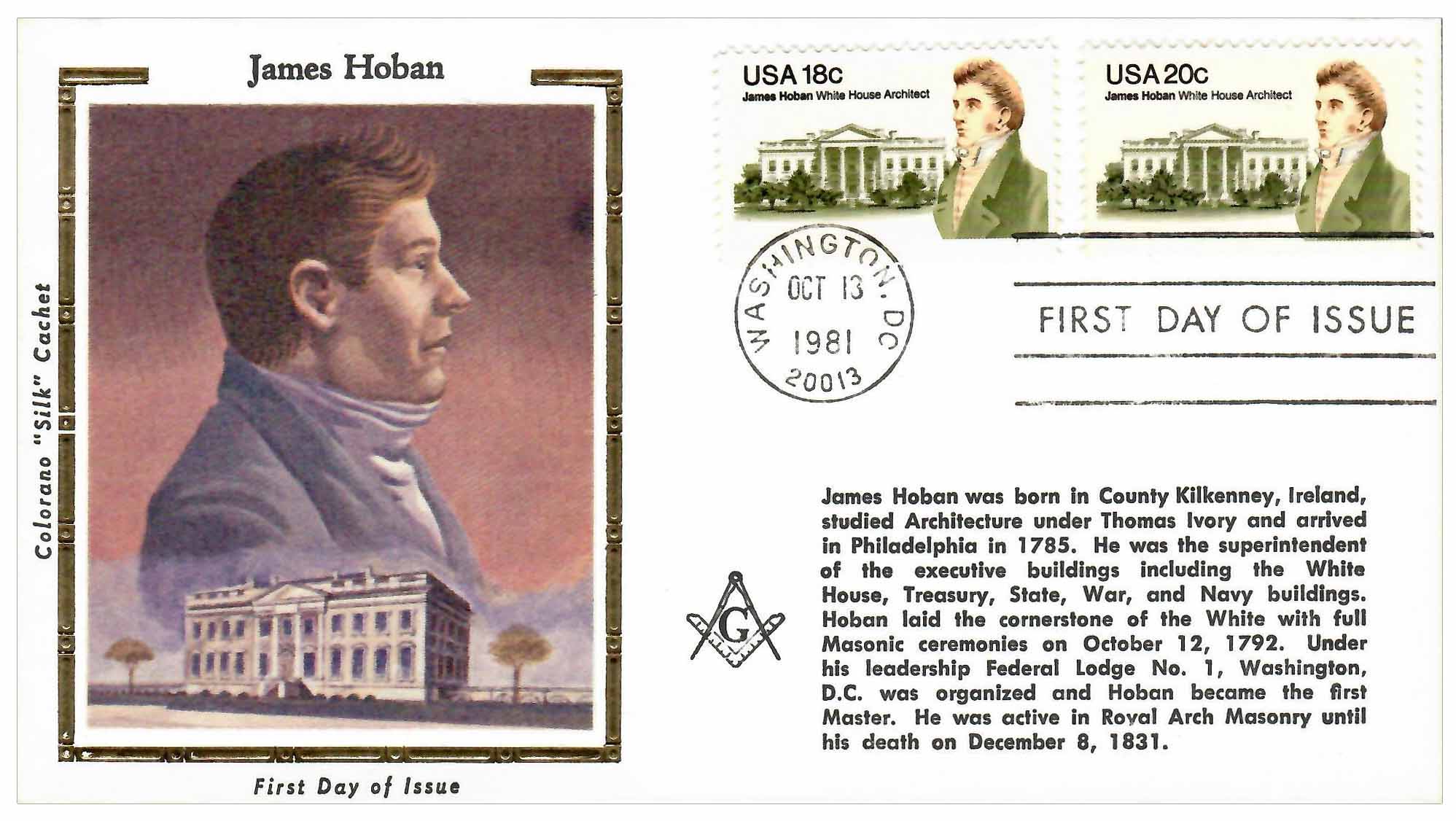
Hoban died on December 8, 1831, in Washington, DC. Many details of his life and the exact number of buildings he designed is unknown. A fire destroyed most of his personal papers in the 1880s and he wasn’t considered as significant a figure in his own time that he would later become.
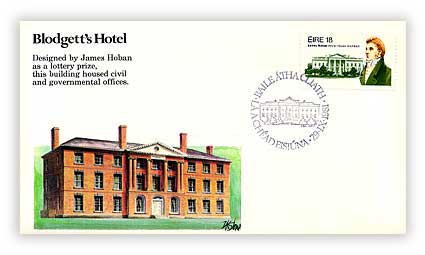
Several buildings are attributed to Hoban, including Prospect Hill in South Carolina, the First Bank of the United States in Philadelphia, the McCleery House in Washington, DC, the William Seabrook House in South Carolina, Oak Hill (the James Monroe House) in Aldie, Virginia, the Belcampe House in Ireland, and several demolished buildings. In 2008, events were held in the US and Ireland to mark the 250th anniversary of his birth.
Click here to view drawings and photos relating to Hoban’s work from the Library of Congress.
1981 20¢ James Hoban
City: Washington, DC
Quantity: 167,360,000
Death Of James Hoban
James Hoban’s exact birthdate is unknown, but it’s believed he was born around 1758 in Callan, County Kilkenny, Ireland. He grew up on the estate of the Earl of Desart.

Hoban spent several years working as a wheelwright and carpenter before receiving placement as an “advanced student” at the Dublin Society’s Drawing School. While there he earned the Duke of Leinster’s medal for his drawings of brackets, stairs, and roofs. After that, he worked as an apprentice to Thomas Ivory.

After the American Revolutionary War ended, Hoban immigrated to the US and found work as an architect in Philadelphia in 1785. Two years later he moved to South Carolina, where he designed a number of plantation homes and public buildings including the Charleston County Courthouse. In 1791, President George Washington passed through South Carolina on his Southern Tour and took note of Hoban’s work. The following year, he invited Hoban to visit Philadelphia, the temporary national capital, to take part in a design competition for the White House.

Hoban won the contest with a design that included a three-story façade. It appears Hoban then worked with President Washington to tweak his design to a two-story façade and 11 bays across instead of nine. Hoban’s design also incorporated features of several Irish and French country homes. Over the next eight years, Hoban oversaw the construction of the White House.

Hoban remained in Washington for the rest of his life. He was one of the supervising architects during the building of the Capitol and the Octagon House. He also worked on other public projects as the nation’s capital developed. After the British burned the White House during the War of 1812, he personally supervised the rebuilding process.
During his time in the capital, Hoban served on the city council and helped to develop Georgetown University, St. Patrick’s Parish, and the Georgetown Visitation Monastery. He also designed the Rossenarra House in Ireland in 1824.

Hoban died on December 8, 1831, in Washington, DC. Many details of his life and the exact number of buildings he designed is unknown. A fire destroyed most of his personal papers in the 1880s and he wasn’t considered as significant a figure in his own time that he would later become.

Several buildings are attributed to Hoban, including Prospect Hill in South Carolina, the First Bank of the United States in Philadelphia, the McCleery House in Washington, DC, the William Seabrook House in South Carolina, Oak Hill (the James Monroe House) in Aldie, Virginia, the Belcampe House in Ireland, and several demolished buildings. In 2008, events were held in the US and Ireland to mark the 250th anniversary of his birth.
Click here to view drawings and photos relating to Hoban’s work from the Library of Congress.











